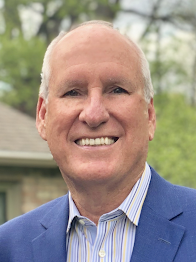Welcome to More Lessons From the Nonprofit Boardroom Blog, a 40-week journey through the new book, More Lessons From the Nonprofit Boardroom, by Dan Busby and John Pearson. Each Wednesday, we're featuring a guest writer’s favorite snippet from the week's topic. Constantino (Connie) Salios is our guest blogger this week for the third of five lessons in "Part 10: Building a 24/7 Board Culture.” And during this COVID-19 era, the role of the board becomes even more critical. We pray that your board will have God-honoring wisdom as you spiritually discern next steps.
LESSON 38 OF 40 – Seven Times When a Board Member Should Bid Adieu
Board service is for a season—but it is not forever!
THE BIG IDEA FROM THE BOOK: Joining a board is often an exciting challenge that can help to accelerate a nonprofit or ministry and provide you with an opportunity to make a significant contribution. But over time many factors can begin to dilute the fit, effectiveness, interest, and energy—and these all could be signals that it might be time to leave the board and offer room for some “fresh air” to enter.
The authors provide seven common reasons why it may be time to move on and resign from the board and they offer a productive checklist for board members to review annually. As Busby and Pearson remind us in the chapter heading, “board service is for a season—but it is not forever!”
MY FAVORITE INSIGHTS from Lesson 38, pages 202-208:
• “When your passion to serve on the board has left the building, it is time to step off the board.”
• “Joining the board for the wrong reason is one thing—staying on a board after you realize that your motives were improper is something else. Quickly find an exit ramp!”
• “If you are serving as the lone dissenting board member—dissenting about the ministry’s direction—or in conflict with other board members or the CEO, your service has effectively ended. Take the right step and resign.”
MY COLOR COMMENTARY: Knowing when to leave a board is often an easier decision when you know clearly why you joined in the first place. In my experience, boards invite you to join for three primary reasons: your ability to contribute as a donor, your name and prestige, and your knowledge and potential to contribute with your influence. And usually in that order.
Resting on top of this foundation should also include your passion for the ministry or nonprofit, your ability to work in collaboration with other board members, a focus on results, and your organizational and governance experience. Now the potential for impact and meaningful service are in place and board service can be enjoyed and productive for all.
THIS WEEK’S QUOTES & COMMENTARY BY CONSTANTINO (CONNIE) SALIOS:
CONSTANTINO (CONNIE) SALIOS was a co-founder of Kalty Salios (1977), manufacturer’s representatives, and Retail Store Services (1986), a retail merchandising company providing in-store service to over 900 Home Depot stores in the west and southeast regions of the U.S. In 2005, both companies were acquired by Advantage Sales and Marketing, the largest consumer packaged goods sales and merchandising company in North America, to provide their platform for national growth in the home center and hardware retail channels. Connie completed his graduate studies in Organizational Leadership in 2002 at Biola University and for eight years served as an Adjunct Professor teaching Practical Leadership Theory, Strategy Formulation, and Strategy Implementation.
Connie also served for six years as National Managing Partner of The Barnabas Group—directing the national growth of this ministry that connects the time, talent, touch, and treasure of Christian marketplace leaders with ministry opportunities.
Currently, Connie informally coaches, consults, and serves on nonprofit boards (Free Wheelchair Mission, Biola Innovation and Entrepreneurship LaunchPad), for-profit boards (Kellogg Garden Supply, HARBRO Emergency and Restoration), and ministry boards (The Barnabas Group, Beachpoint Church).
TO DO TODAY:
• Review board expectations annually, as a best practice, and make timely changes as needed.
• Complete a personal evaluation annually to make sure you still belong and can make a contribution.
• And remember that we all have a “shelf life.” Like many of the items in our pantry, the date may have passed or is getting close for us to move on. Celebrate your time on the board, and free up your seat for the next generation. As Dr. Henry Cloud says: “Wise people know when to quit.”
• Visit the ECFA Knowledge Center and read and share the short chapter, Lesson 38, “Seven Times When a Board Member Should Bid Adieu.”
NEXT WEDNESDAY: On Sept. 30, 2020, watch for the commentary by Ed McDowell on Lesson 39, “Identify Your Key Assumptions. An inaccurate premise may lead to a colossal flop!”
BULK ORDERS: Click here. For more resources and to download the book's Table of Contents, visit the book's webpage.
















